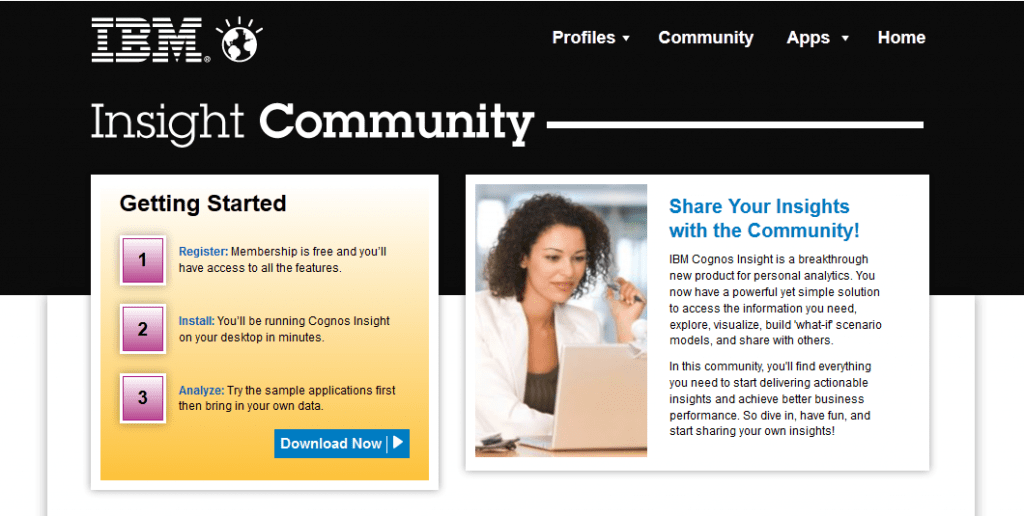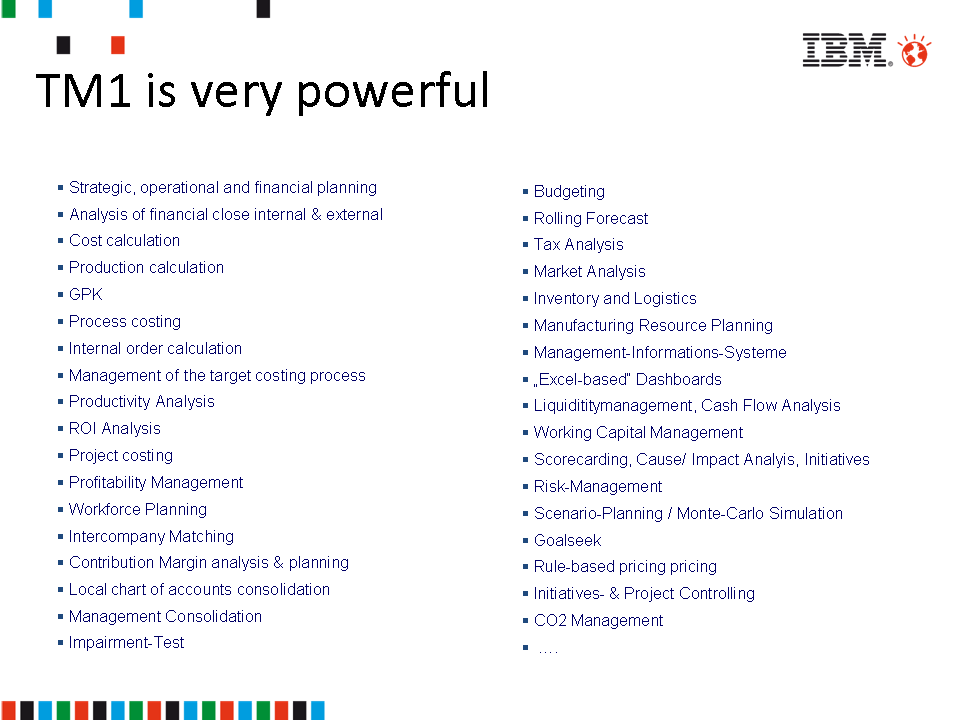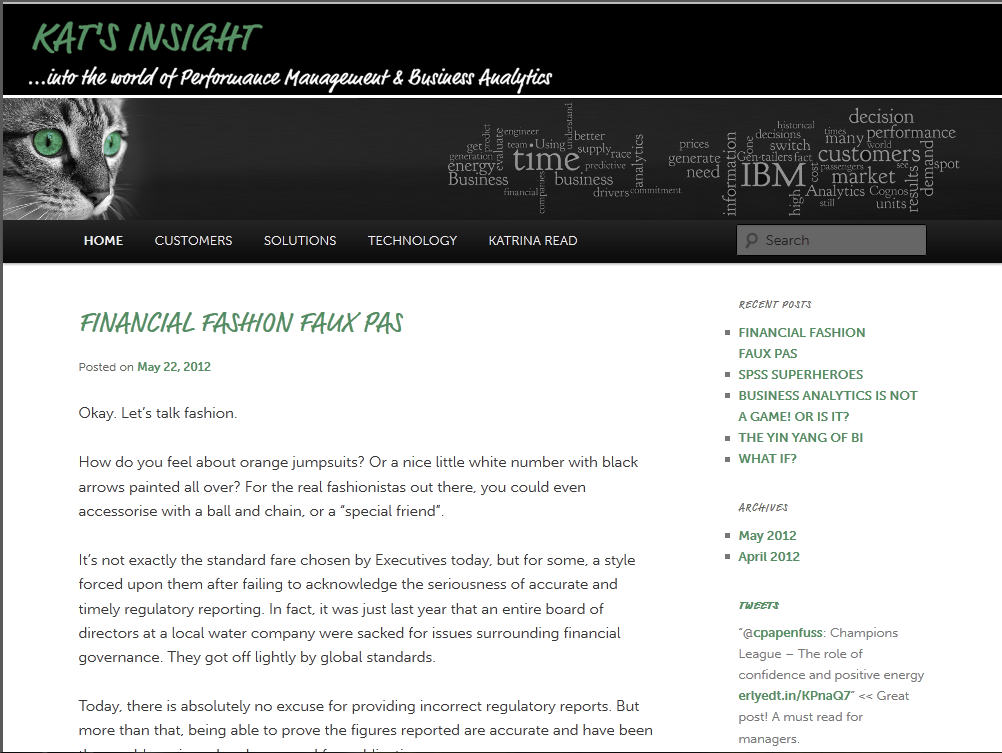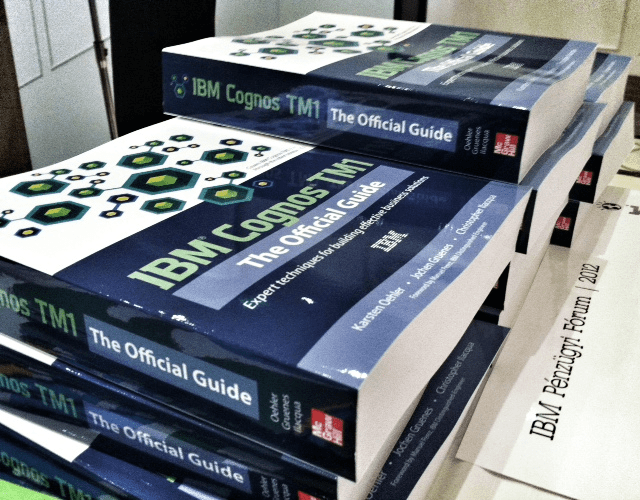The new TM1 book
The highly anticipated 10.1 version of IBM Cognos TM1 was released in February 2012. Along with the software there is also a great new TM1 book: IBM Cognos TM1 – The Official Guide. My German colleague Karsten Oehler is one of the authors of this comprehensive TM1 book. We had the opportunity to catch up last week. It was very early in the morning and we were both on our first cup of coffee. This is the first part of two short interviews. Check back Tuesday next week to read more.
 Christoph Papenfuss: Let’s start this discussion with an important question. TM1 is a strange product name. What does TM1 stand for?
Christoph Papenfuss: Let’s start this discussion with an important question. TM1 is a strange product name. What does TM1 stand for?
Karsten Oehler: The name sounds still fresh and interesting after 25 years, right? Oh well…..it is an interesting name, indeed. And we do get a lot of questions about it. Here is the truth. Don’t be shocked – it stands for Table Manager 1. And it is the solution No 1 from my point of view.
Christoph Papenfuss: What is TM1? Can you describe it in an elevator-speech style?
Karsten Oehler: Cognos TM1 is the universal tool for the business person wanting to do all kinds of analytical work like forecasting, planning, simulation, analysis and reporting. Some people call it the ‘Swiss Army Knife’ for the business. The only thing it can’t do (yet) is to cook coffee 😉
Christoph Papenfuss: Who can use IBM Cognos TM1 and why should they?
Karsten Oehler: Everybody with a need or desire to perform analytical work should use TM1. TM1 links typical analytical office work (Excel) with a high performing analytical database. However it doesn’t require that much conceptual overhead so that a business user is able to define his own data structure. TM1 doesn’t replace spreadsheets or data warehouses. It literally brings both worlds together.
Christoph Papenfuss: There are many planning, budgeting and forecasting solutions out on the market. What makes IBM Cognos TM1 so special?
Karsten Oehler: I am heading up a research group at the Controller Verein, the biggest European community for management accountants and finance experts. We describe several classes of planning tools: spreadsheet enhancements, ERP enhancements, OLAP, specific (financial) planning solutions and generic planning solutions. The last category is the most powerful one because it provides a lot of flexibility while also allowing you to leverage strong predefined planning functions like workflow, simulation, financial intelligence. Within this group TM1 is the best one because it has the most modern architect (scalability, write back queuing, rule optimization, batch processing environment) and the newest interface.
Christoph Papenfuss: Is TM1 just for planning, budgeting and forecasting?
Karsten Oehler: Absolutely not! As I mentioned before, TM1 is extremely powerful and flexible. Planning, budgeting and forecasting is just one area where TM1 can add tremendous value. Other important areas where TM1 excels at is profitability and sales analysis, costing (an area where TM1 is extremely strong), management consolidation, and last but not least production planning.
Christoph Papenfuss: You have just released the book IBM Cognos TM1 – The Official Guide . What prompted you to write this book?
. What prompted you to write this book?
Karsten Oehler: When you look at the bookstores and see shelves of SAP books and hardly any book about the best analytical tool, you have to scratch your head. We wanted to change that. Also, together with our customers we had developed a lot of valuable business content over the past decade. We really wanted to share this with others.
Christoph Papenfuss: What can you expect to learn from the book?
Karsten Oehler: How to live a better life – just kidding. No, in all seriousness it should help you with your daily TM1 work. It explains the architecture in a focused and structured way. This is an area where the standard documentation is sometimes a bit too extensive. Also, we have included a ton of business content. There are several small models that explain how TM1 can solve specific business problems like rolling forecasting, inter-company matching, variance analysis, activity based management etc..
Christoph Papenfuss: Who should read the book?
Karsten Oehler: Anybody who has an interest in TM1! Early feedback shows that power users and business consultants are the primary readers of this book.
Christoph Papenfuss: What is the best way to read your TM1 book? Is it more like a workbook or a resource guide that you pull out when you need it?
Karsten Oehler: Of course you could read the entire book, but I wouldn’t recommend that. It’s 800 pages strong! I would rather suggest to focus on just those business areas that you are interested in. Simply read it section by section. I would imagine that most people will use the book as a powerful reference.
Christoph Papenfuss: IBM recently released TM 10.1 . Do you cover the latest version in your book?
Karsten Oehler: We certainly cover it but it was not easy because there were a lot of short term changes in the development process. The business models are backward compatible. We wanted to make sure that users from the older releases are also able to leverage the book.
To be continued next Thursday…..the second part will focus on the 10.1 release.



About Dr. Karsten Oehler (author of the TM1 book):
Karsten is head of the Performance Management Client Technical Professionals at IBM Germany. Prior to joining IBM, he spent more than 15 years with several international software companies as a product manager, marketing executive, and consultant for financial accounting and business intelligence software. He has published several books and well over 130 articles about business analytics.











